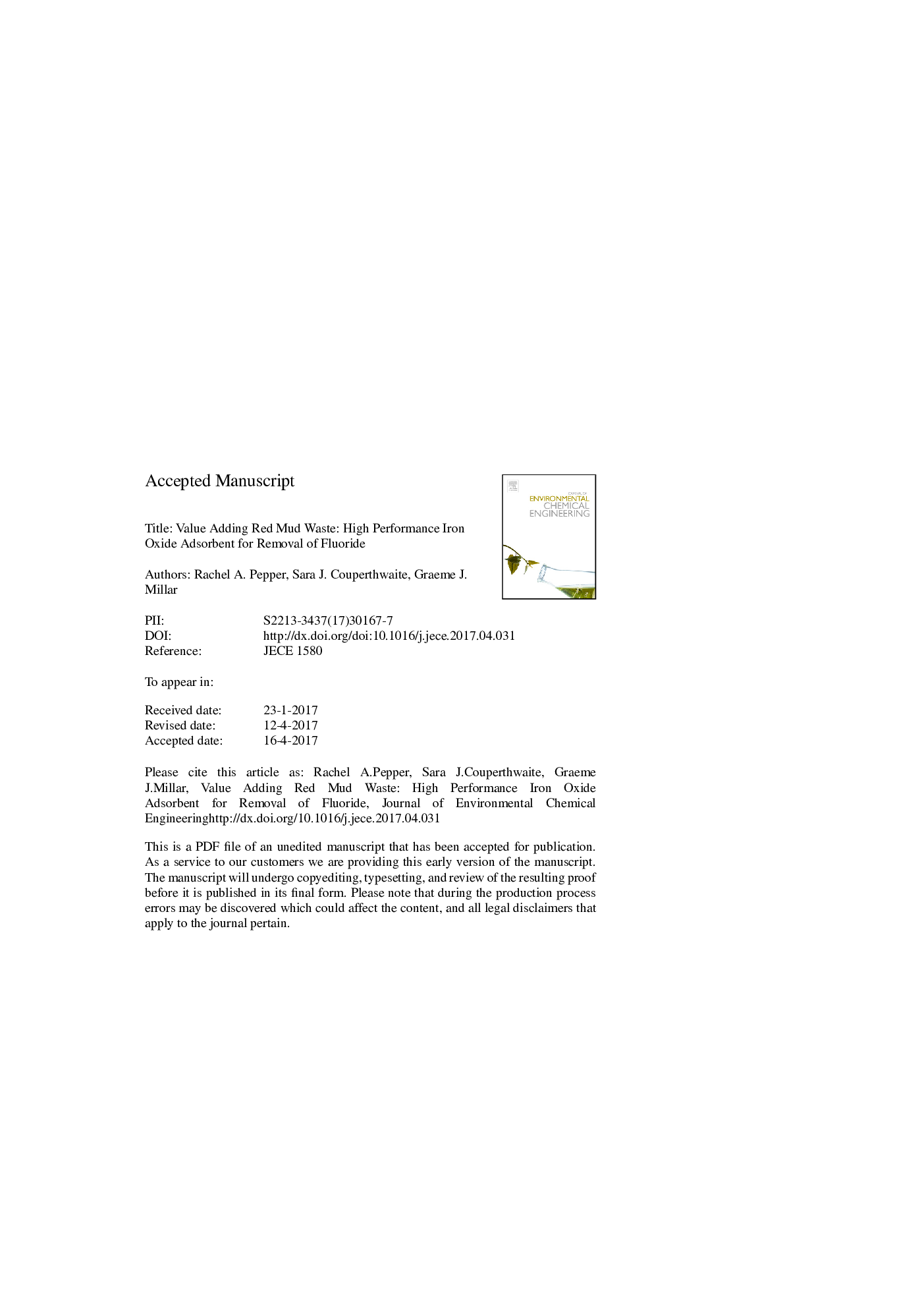| Article ID | Journal | Published Year | Pages | File Type |
|---|---|---|---|---|
| 4908366 | Journal of Environmental Chemical Engineering | 2017 | 24 Pages |
Abstract
A novel method for the synthesis of iron oxide based sorbents from bauxite residue (red mud) was developed by way of a sequential digestion and selective precipitation process. The red mud was consecutively digested with phosphoric acid and hydrochloric acid, precipitated by sodium hydroxide addition, and aged for 72 h at pH 3-3.5. This process allowed the production of a relatively pure crystalline material, akaganeite (β-FeOOH), comprised of high surface area (223 m2/g). The performance of the synthesised material as a fluoride sorbent was compared with a commercial adsorbent (granular ferric hydroxide). Equilibrium isotherms revealed that both sorbents reduced the amount of fluoride in solution to <1.5 mg/L. Significantly, the red mud derived akaganeite had a higher maximum adsorption capacity than the commercial granular ferric hydroxide (11.40 and 9.23 g/kg, respectively). Performance differences were suggested to relate to the presence of active sites which comprised of iron and aluminium and/or titanium species.
Related Topics
Physical Sciences and Engineering
Chemical Engineering
Chemical Engineering (General)
Authors
Rachel A. Pepper, Sara J. Couperthwaite, Graeme J. Millar,
